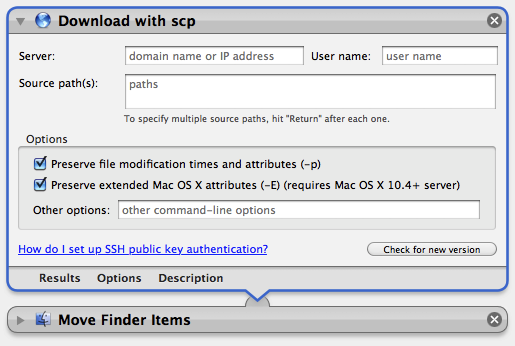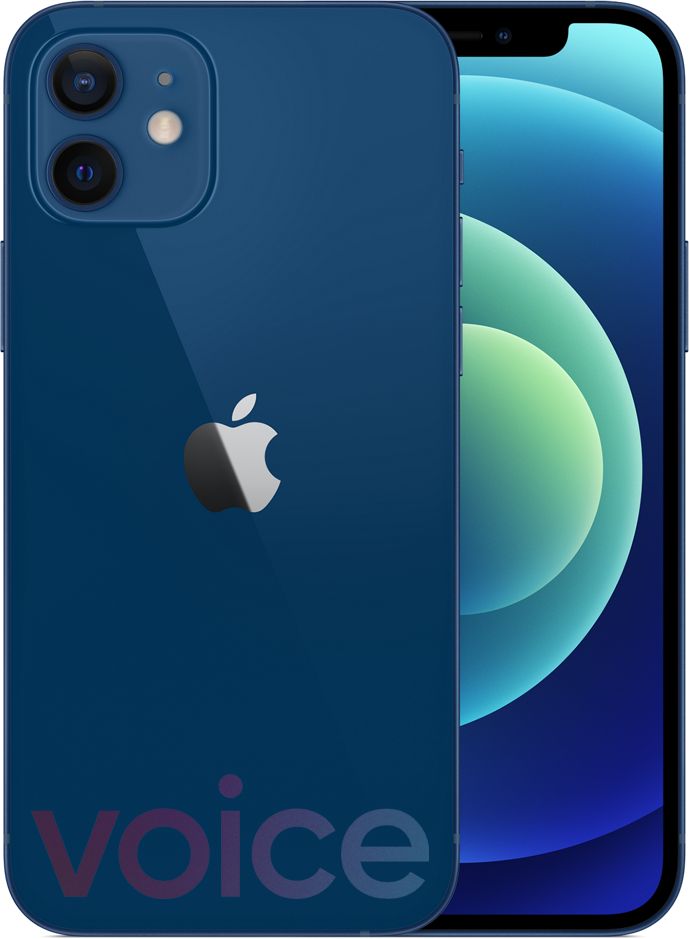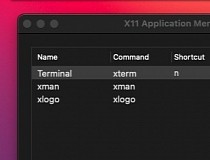Download X11 For Mac
Quickstart
- Install Xcode and the Xcode Command Line Tools
- Agree to Xcode license in Terminal:
sudo xcodebuild -license - Install MacPorts for your version of the Mac operating system:
Installing MacPorts
R 4.1.1 binary for macOS 10.13 ( High Sierra) and higher, Intel 64-bit build, signed and notarized package. Contains R 4.1.1 framework, R.app GUI 1.77 in 64-bit for Intel Macs, Tcl/Tk 8.6.6 X11 libraries and Texinfo 6.7. The latter two components are optional and can be ommitted when choosing 'custom install', they are only needed. XQuartz became the default X11 implementation for many users after the 10.8 iteration, when Apple decided to completely remove the X11 server and client libraries from the default OS X installation. Moreover, XQuartz is an Apple and community supported project, designed to keep improving support for X11 apps on the OS X platform. Download Apple X11 for OS X 10.7.5 for Mac to get a complete X Window System for X11 apps. Apr 14, 2021 X11 for Windows and Mac. X11 is a remote-display protocol used by Linux/Unix machines, including the Linux machines at Thayer. By running an X11 program (known as a server) on your computer, you can access graphical Linux programs remotely through an SSH client. In addition some.nix applications ported to macOS do not run natively under the.
X11 for Mac OS X 1.0. An implementation of the X Window System that makes it possible to run X11-based applications in Mac OS X. Based on the open source XFree86 project — the most common implementation of X11 — X11 for Mac OS X is compatible, fast, and fully integrated with Mac OS X. It includes the full X11R6.6 technology.
MacPorts version 2.7.1 is available in various formats for download and installation (note, if you are upgrading to a new major release of macOS, see the migration info page):
- “pkg” installers for Big Sur, Catalina, and Mojave, for use with the macOS Installer. This is the simplest installation procedure that most users should follow after meeting the requirements listed below. Installers for legacy platforms High Sierra, Sierra, El Capitan, Yosemite, Mavericks, Mountain Lion, Lion, Snow Leopard, Leopard and Tiger are also available.
- In source form as either a tar.bz2 package or a tar.gz one for manual compilation, if you intend to customize your installation in any way.
- Git clone of the unpackaged sources, if you wish to follow MacPorts development.
- The selfupdate target of the port(1) command, for users who already have MacPorts installed and wish to upgrade to a newer release.
Checksums for our packaged downloads are contained in the corresponding checksums file.
The public key to verify the detached GPG signatures can be found under the attachments section on jmr's wiki page. (Direct Link).

Please note that in order to install and run MacPorts on macOS, your system must have installations of the following components:
Apple's Xcode Developer Tools (version 12.2 or later for Big Sur, 11.3 or later for Catalina, 10.0 or later for Mojave, 9.0 or later for High Sierra, 8.0 or later for Sierra, 7.0 or later for El Capitan, 6.1 or later for Yosemite, 5.0.1 or later for Mavericks, 4.4 or later for Mountain Lion, 4.1 or later for Lion, 3.2 or later for Snow Leopard, or 3.1 or later for Leopard), found at the Apple Developer site, on your Mac operating system installation CDs/DVD, or in the Mac App Store. Using the latest available version that will run on your OS is highly recommended, except for Snow Leopard where the last free version, 3.2.6, is recommended.
With Xcode 4 and later, users need to accept the Xcode EULA by either launching Xcode or running:
Apple's Command Line Developer Tools, which can be installed on recent OS versions by running this command in the Terminal:
Older versions are found at the Apple Developer site, or they can be installed from within Xcode back to version 4. Users of Xcode 3 or earlier can install them by ensuring that the appropriate option(s) are selected at the time of Xcode's install ('UNIX Development', 'System Tools', 'Command Line Tools', or 'Command Line Support').
- (Optional) The X11 windowing environment, for ports that depend on the functionality it provides to run. You have multiple choices for an X11 server:
- Install the xorg-server port from MacPorts (recommended).
- The XQuartz Project provides a complete X11 release for macOS including server and client libraries and applications.
- Apple's X11.app is provided by the “X11 User” package on older OS versions. It is always installed on Lion, and is an optional installation on your system CDs/DVD with previous OS versions.
macOS Package (.pkg) Installer
The easiest way to install MacPorts on a Mac is by downloading the pkg or dmg for Big Sur, Catalina, Mojave, High Sierra, Sierra, El Capitan, Yosemite, Mavericks, Mountain Lion, Lion, Snow Leopard, Leopard or Tiger and running the system's Installer by double-clicking on the pkg contained therein, following the on-screen instructions until completion.
This procedure will place a fully-functional and default MacPorts installation on your host system, ready for usage. If needed your shell configuration files will be adapted by the installer to include the necessary settings to run MacPorts and the programs it installs, but you may need to open a new shell for these changes to take effect.
The MacPorts “selfupdate” command will also be run for you by the installer to ensure you have our latest available release and the latest revisions to the “Portfiles” that contain the instructions employed in the building and installation of ports. After installation is done, it is recommended that you run this step manually on a regular basis to to keep your MacPorts system always current:

At this point you should be ready to enjoy MacPorts!
Type “man port” at the command line prompt and/or browse over to our Guide to find out more information about using MacPorts. Help is also available.
Source Installation

If on the other hand you decide to install MacPorts from source, there are still a couple of things you will need to do after downloading the tarball before you can start installing ports, namely compiling and installing MacPorts itself:
- “cd” into the directory where you downloaded the package and run “tar xjvf MacPorts-2.7.1.tar.bz2” or “tar xzvf MacPorts-2.7.1.tar.gz”, depending on whether you downloaded the bz2 tarball or the gz one, respectively.
- Build and install the recently unpacked sources:
- cd MacPorts-2.7.1
- ./configure && make && sudo make install
- cd ../
- rm -rf MacPorts-2.7.1*
These steps need to be perfomed from an administrator account, for which “sudo” will ask the password upon installation. This procedure will install a pristine MacPorts system and, if the optional steps are taken, remove the as of now unnecessary MacPorts-2.7.1 source directory and corresponding tarball.
To customize your installation you should read the output of “./configure --help | more” and pass the appropriate options for the settings you wish to tweak to the configuration script in the steps detailed above.
You will need to manually adapt your shell's environment to work with MacPorts and your chosen installation prefix (the value passed to configure's --prefix flag, defaulting to /opt/local):
- Add ${prefix}/bin and ${prefix}/sbin to the start of your PATH environment variable so that MacPorts-installed programs take precedence over system-provided programs of the same name.
- If a standard MANPATH environment variable already exists (that is, one that doesn't contain any empty components), add the ${prefix}/share/man path to it so that MacPorts-installed man pages are found by your shell.
- For Tiger and earlier only, add an appropriate X11 DISPLAY environment variable to run X11-dependent programs, as Leopard takes care of this requirement on its own.
Lastly, you need to synchronize your installation with the MacPorts rsync server:
Upon completion MacPorts will be ready to install ports!
It is recommended to run the above command on a regular basis to keep your installation current. Type “man port” at the command line prompt and/or browse over to our Guide to find out more information about using MacPorts. Help is also available.
Git Sources
If you are developer or a user with a taste for the bleeding edge and wish for the latest changes and feature additions, you may acquire the MacPorts sources through git. See the Guide section on installing from git.
Purpose-specific branches are also available at the https://github.com/macports/macports-base/branches url.
Alternatively, if you'd simply like to view the git repository without checking it out, you can do so via the GitHub web interface.
Selfupdate
If you already have MacPorts installed and have no restrictions to use the rsync networking protocol (tcp port 873 by default), the easiest way to upgrade to our latest available release, 2.7.1, is by using the selfupdate target of the port(1) command. This will both update your ports tree (by performing a sync operation) and rebuild your current installation if it's outdated, preserving your customizations, if any.
Other Platforms
Running on platforms other than macOS is not the main focus of The MacPorts Project, so remaining cross-platform is not an actively-pursued development goal. Nevertheless, it is not an actively-discouraged goal either and as a result some experimental support does exist for other POSIX-compliant platforms such as *BSD and GNU/Linux.
The full list of requirements to run MacPorts on these other platforms is as follows (we assume you have the basics such as GCC and X11):
- Tcl (8.4 or 8.5), with threads.
- mtree for directory hierarchy.
- rsync for syncing the ports.
- cURL for downloading distfiles.
- SQLite for the port registry.
- GNUstep (Base), for Foundation (optional, can be disabled via configure args).
- OpenSSL for signature verification, and optionally for checksums. libmd may be used instead for checksums.
Normally you must install from source or from an git checkout to run MacPorts on any of these platforms.
Help
Help on a wide variety of topics is also available in the project Guide and through our Trac portal should you run into any problems installing and/or using MacPorts. Of particular relevance are the installation & usage sections of the former and the FAQ section of the Wiki, where we keep track of questions frequently fielded on our mailing lists.
If any of these resources do not answer your questions or if you need any kind of extended support, there are many ways to contact us!
If you’ve ever thought about running Unix programs on your Mac, you might have assumed that meant you were stuck with the command-line interface. But you aren’t. Go to Leopard’s Applications: Utilities folder and double-click on X11.app. That will open xterm. At first, you might think it’s just another command-line tool like Mac OS X’s Terminal. But xterm is actually a gateway to something much bigger: the X11 graphical computing environment.
From X11 (which runs side by side with Mac OS X’s native Aqua environment), you can run a host of graphical Unix programs—applications that haven’t been fully ported to Mac OS X—as well as applications on remote Linux or Unix systems. Here’s a quick look at X11 and a few of the things you can do with it.
(Note: If you’re still running Tiger, you won’t find X11 installed by default; you’ll have to insert your Mac OS X install discs, run the Optional Installs package, and install it from there.)
Where to Get X11 Programs
The OS X install of X11 comes with a few programs of its own. For example, type /usr/X11/bin/xeyes & at the X11 command-line prompt, and you’ll open xeyes, a little program that puts a pair of animated eyes on your X11 desktop; move your cursor, and the eyes will follow it. Type /usr/X11/bin/xcalc &, and you’ll get an X11-based calculator. To get a list of the X11 programs that come with OS X, type ls /usr/X11/bin. You can then get more information about any of the programs listed there by typing man program name. That will summon the Unix manpage viewer and the text-only documentation for that program.
To be honest, the X11 applications that come with OS X aren’t all that exciting. To get more interesting ones, you have to download them.
Mac X11 App

Download X11 For Mac Os X
The X11 program that I most highly recommend is GIMP (GNU Image Manipulation Program). It’s a great image editor that’s actually comparable in some ways to Adobe Photoshop. If you download it from gimp.org, you’ll get a huge pile of source code that you’ll then have to build into an operable program. It’s far easier to download the GIMP binary from Wilbur Loves Apple. There, you’ll find GIMP 2.4.5 for both OS X 10.5 and 10.4 (Intel and PowerPC). Once you download that, you can just open the disk image and copy Gimp.app to your Applications folder.
While GIMP may be the best-known X11 program that will run on the Mac, there are hundreds of others worth checking out: Inkscape is a free vector-drawing program similar to Adobe Illustrator. If you want to run Microsoft Internet Explorer on your Intel Mac, you can do so with ies4osx, an X11-based application that uses the Wine Windows emulator to run any of four different versions of Explorer. (ies4osx uses a Mac-specific variant of Wine called Darwine, which is provided as a download on the ies4osx site along with ies4osx itself.)
Finally, if you really want to explore the world of X11 software, you can download and install either MacPorts or Fink. Both are open-source applications that attempt to catalog and help you install dozens of different X11 programs. But be warned: If you’re not familiar with the command line and Unix file management, don’t bother with either of them.
Different Interfaces
Whatever applications you want to try, you’ll notice immediately that they have their own look-and-feel, and it’s different from OS X’s.
For example, if you open GIMP, xcalc, and xeyes at the same time and then switch between them, you’ll notice that the X11 menu bar at the top of the screen remains the same no matter which application has the focus. If you can get used to not zipping up to the top of the screen to find a program’s menus, you should do just fine with X11.
Individual X11 programs often have menus and other interface elements of their own in addition to that overall X11 menu bar, and those elements aren’t consistent from one program to the next. For example, to open a menu in xterm, you control-click; other programs display their menus at the top of their own windows.
X11 Osx
Other interface conventions vary in X11. For instance, most of the time you can highlight a text selection in an X11 application, and select Edit: Copy or press command-C to copy it. However, when you switch to another X11 program to paste in that selection, you’ll notice that the Edit: Paste menu item in X11’s global menu is grayed out; command-V won’t do anything. Instead, each X11 application uses its own pasting command. Most commonly, you’ll press the middle mouse button to paste; if your mouse doesn’t have three buttons, go to Preferences: Input, select Emulate Three Button Mouse, and follow the instructions.
Running X11 Remotely
If you have access to a remote Unix or Linux system (either in your office or on the Internet), you can connect to it via Secure Shell (SSH) and then run remote X11 applications that will display on your Mac’s desktop.
Apple X11
For this to work, the remote computer needs to be configured to permit SSH logins and to allow X11 to run over SSH. To do this, open xterm and type ssh -X username@hostname (replacing username with your remote user name and hostname with the host name or IP address of the remote computer). Log in with your password.
Download X11 For Mac Os X
That done, try running an X11 application: xterm, xeyes, Firefox, or anything else that’s installed on the remote system. Depending on the speed of the connection, that application should open fairly quickly. If you get the message “error: Can’t open display: DISPLAY is not set,” this usually means the administrator of the remote computer needs to enable the X11 Forwarding option in the sshd_config file before you log in.
Download Gimp For Mac
Brian Jepson is the executive editor of Make magazine’s book series and the coauthor of Mac OS X for Unix Geeks, fourth edition (O’Reilly, 2008).